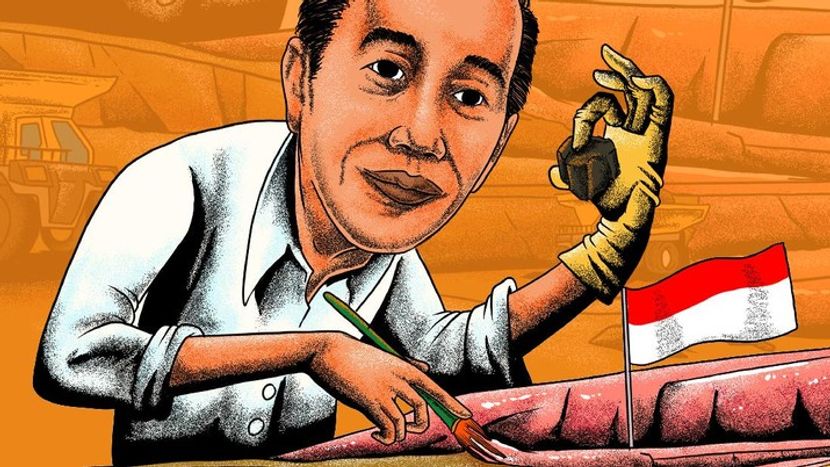Joko to develop downstream nickel minerals industry in Indonesia

One of the accomplishments of the Joko administration has been the downstream mining industry, a program that has become the backbone of Indonesia and has succeeded in increasing the value added from raw mining production to mature commodities.Understandably, therefore, Indonesia ended up with a windfall several times over from this downstream project. Nickel exports now stand at $34 billion, jumping to around Rp510 trillion from Rp33 trillion previously. The success of the domestic nickel downstream stems from the ban on nickel ore exports abroad since 2020, not without challenges, and the ban on exports has been disturbed worldwide, including the European Union (EU), which challenged the policy at the World Trade Organization. Although Indonesia lost, this country is a sovereign nation where national interest is everything as far as the national interest is concerned, and the government can't take orders from anyone. Most importantly now, Indonesia has begun to develop its nickel industry into a large ecosystem for electric vehicles (EVs), and the dream of creating a strong, integrated EV ecosystem is beginning to materialize one by one. According to the Ministry of Energy and Mineral Resources (ESDM), the cumulative number of nickel processing and refining facilities (smelters) in Indonesia, whether in operation, under construction, or hoping to be built, has reached 116, according to the Special Staff for Accelerated Mineral and Coal Governance of the Minister of Energy and Mineral Resources.
The number of smelters in Indonesia using the pyrometallurgical process or processing high-grade nickel (putrescine) has reached 97, with a further 19 smelters using the hydrometallurgical process utilizing low-grade nickel (limonite). The total number of available smelters to date is 116, not to mention the newest smelters. Secondary nickel smelters (pyrometallurgical type) are growing in size, with 28 new smelters planned and 10 smelters using the hydrometallurgical process currently in the planning stage. The respective demand is 130 million tons per year (pyrometallurgical) and 54 million tons per year (hydrometallurgical), with 44 pyro-nickel smelters and 3 hydrometallurgical smelters in Indonesia. In his early 2024 figures, there is still one nickel smelter under construction. There are 25 pyrometallurgical smelters and 6 hydrometallurgical smelters under construction.
Previously the Coordinating Ministry of Maritime Affairs and Investment (Kemenko Marves) revealed that Indonesia currently has nickel metal reserves of about 50-60 million tons. Based on this amount, the remaining amount of Indonesia's nickel reserves is expected to last for about 25-30 years, according to the deputy official in charge of investment and mining coordination at the Coordinating Ministry for Maritime Affairs and Fisheries. However with the launch of the nickel smelter project currently under construction, the remaining life of the nickel reserves is expected to be shortened to 20 years. The issue now is capacity, which is being built to require about 1 million tons of nickel metal, so if the mines are ready to reach 1 million tons, capacity could drop, which would reduce reserves to less than 20 years, and they are aiming to be able to last 20-25 years. That's why the government is also currently trying to develop the electric car battery recycling plant industry, the reason being that at least 99% of nickel can be extracted again from this process. They now have the technology to recover 99% of nickel from used batteries, and there is already a recycling battery facility in Morowali, and they are planning to build another, so eventually Indonesia will not only produce nickel from mining, but also recycle it.

